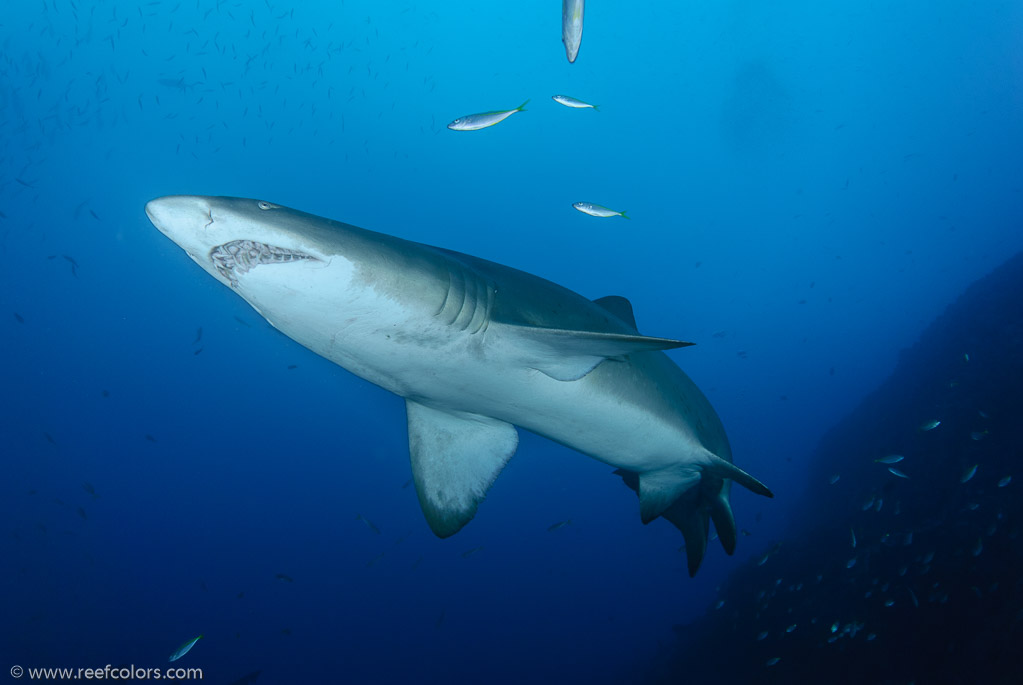
| Home |
| Colors of the Reef |
| Search the Reef |
| Science and the Reef |
| Equipment |
| New |
| Links |
| Contact |
| Interna |
Taxonomy – Giving Names to Species
Scientific Names and Taxonomy
The exact number of different organisms living on earth is not known, but it is estimated to about two millions. The most comprehensive catalogue of species is the “Species 2000 & IT IS Catalogue of Life” that in its 2010 edition already lists 1.3 million species. This requires the intense cooperation of many scientists and scientific organizations around the world. Prerequisite for this is a unique and systematic way to name all the species (nomenclature) which goes back to Carolus Linnaeus in the early 18th century. He introduced the scientific names defining the Genus and the Species (binomial nomenclature) which allows to describe each living species in a unique way. In addition, a systematic way to classify the species in a hierarchical system of biological classification is necessary. This classification is also called taxonomy. The classification system consists of eight major taxonomic ranks: domain, kingdom, phylum, class, order, family, genus, and species. In this system every species has not only a systematic scientific name but also a well defined (taxonomic) position within the biological classification system. Once the scientific name is known, the taxonomic classification is defined and can be found in a database.
Common Names
In contrast to the scientific names, the common names are neither systematic nor specific and highly dependent on the geographic region they are used. Thus, the sand tiger shark (Carcharias Taurus) is also called grey nurse shark in Australia. But it has no relation with either the tiger shark or the nurse shark. And, of course, the common names are different in different languages. Therefore, common names are only useful to describe a species in a certain geographical and cultural context.
Scientific Names
As mentioned above, scientific names are unique and specific. At least in theory. Unfortunately, in many cases more than one scientific name has been published for the same species by different scientists. Nowadays, with powerful databases like that of species 2000, these ambiguities are straightened out and a single scientific name is selected as “accepted name”. The accepted name for the sand tiger shark is “Carcharias Taurus”, all other published names like “Odontaspis cinerea” are treated as synonyms. The FishBase lists for the sand tiger shark 19 synonyms for the scientific name and more than 100 common names in various languages! Therefore, it is absolutely necessary to check if a scientific name is indeed the accepted name or only a synonym.
Workflow for Creating the Reefcolors Database
Step 1. My original pictures are stored in a folder in RAW formate and organized by Lightroom. The toughest, and most error prone step is to identify the species on the picture. Sometimes it is easy; e. g. there is nothing one can do wrong to identify a sand tiger shark. However, gobies all look more or less the same (at least to me as a non-specialist) and most sponges are hopeless to identify without close (microscopic) inspection. In some cases a genetic analysis would be necessary! So, I do my best, use many books and databases and sometimes ask experts.
Step 2. The common name and the scientific name are now stored in the metadata of the picture via Lightroom. In addition, the location, dive site etc. are also stored.
Step 3. The most important metadata are exported to an Excel file. The list with all scientific names is the matched with the accepted scientific names in the WORMS database. Fortunately, this is automatic and returns a file with all the taxa including the accepted scientific names.
Step 4. Now the scientific names in my Lightroom database are corrected, to get consistent data.
Step 5. The data are transferred from Exel to MySQL. Done.


